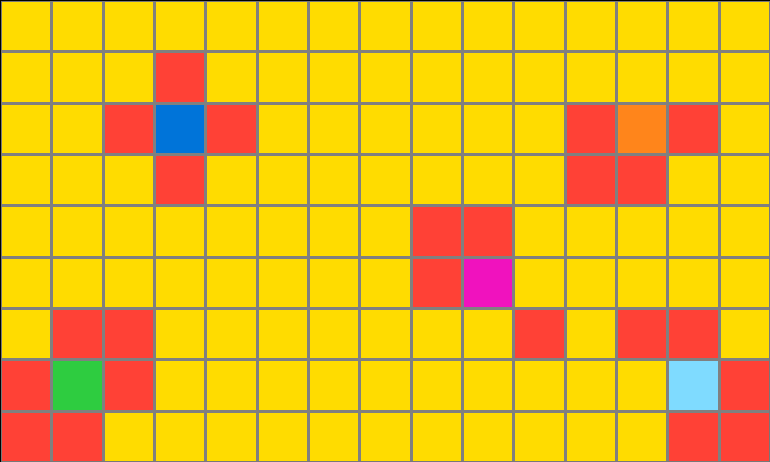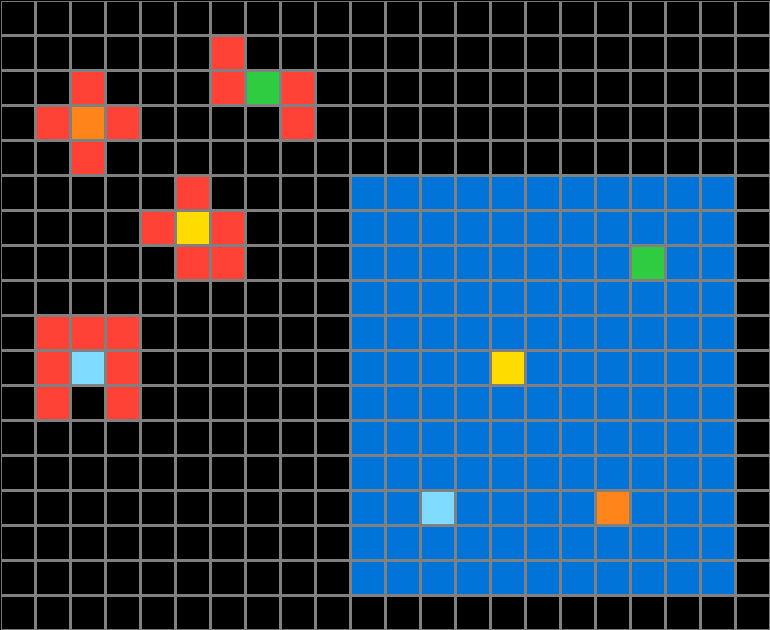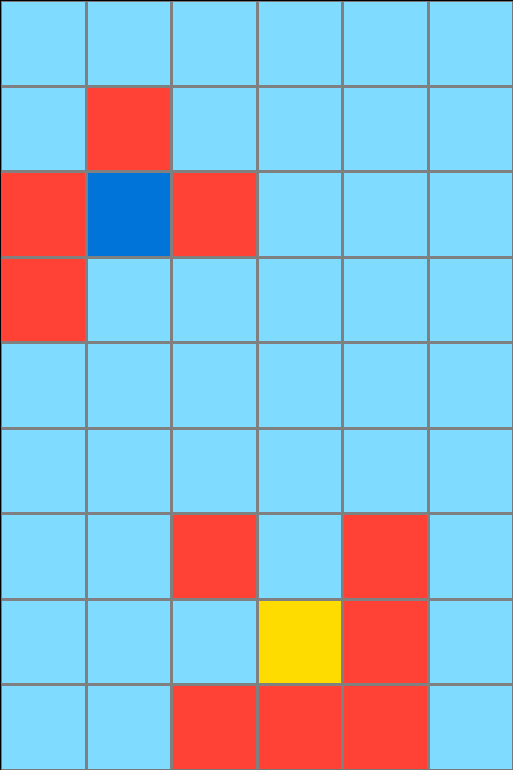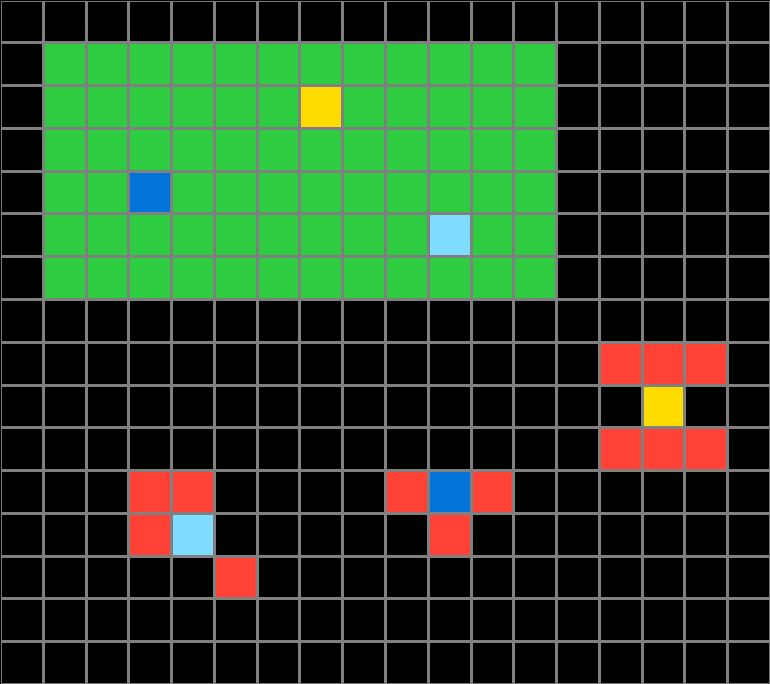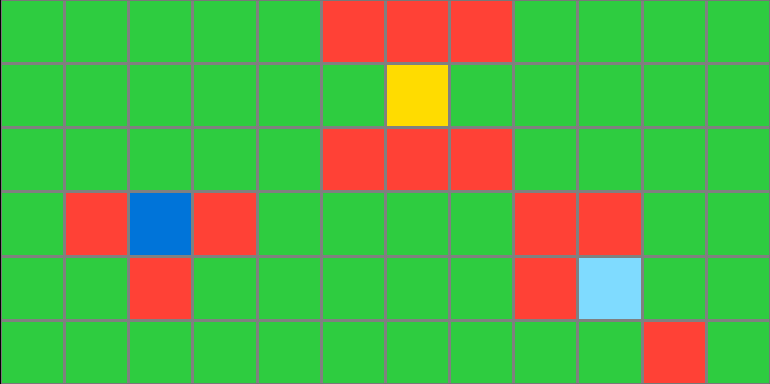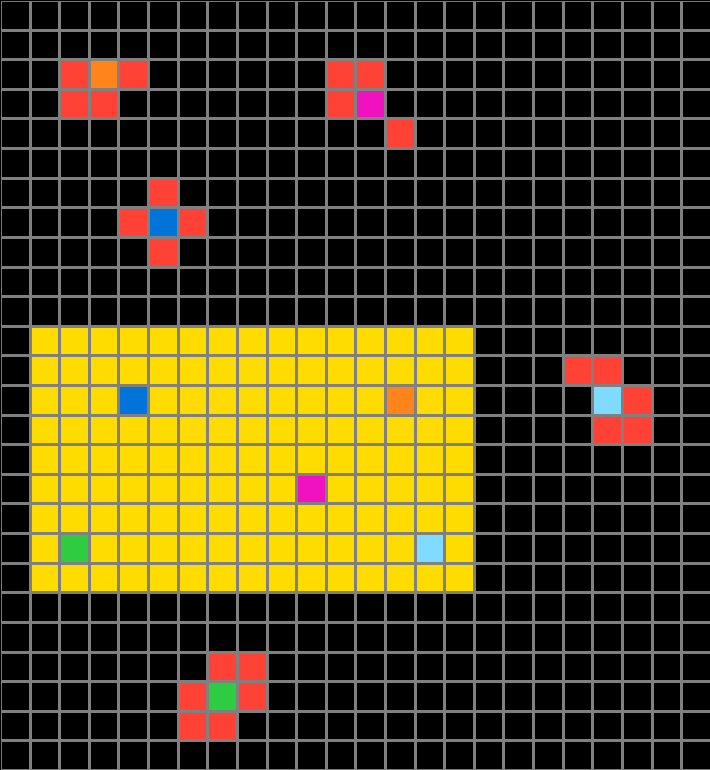Participant 1
Initial description: Keep all the shapes but one from the original.
Final description: Keep all the shapes but one and keep the random little block colors. Shrink the grid by at least half.

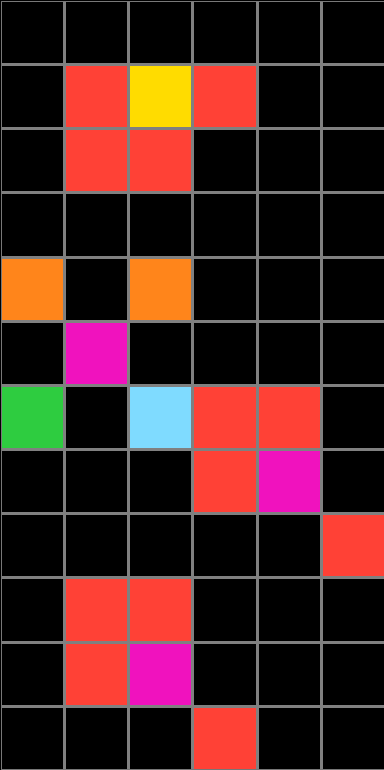
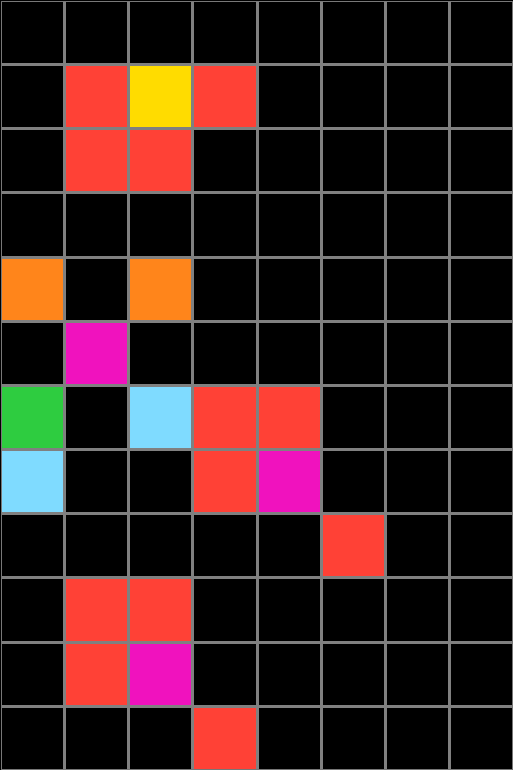
Participant 2
Initial description: Use the rectangle color to make a grid. Only use the colors in the yellow box.
Final description: Use the yellow rectangle to make a yellow grid. The colors squares inside the yellow rectangle are where the shapes in black should be placed.
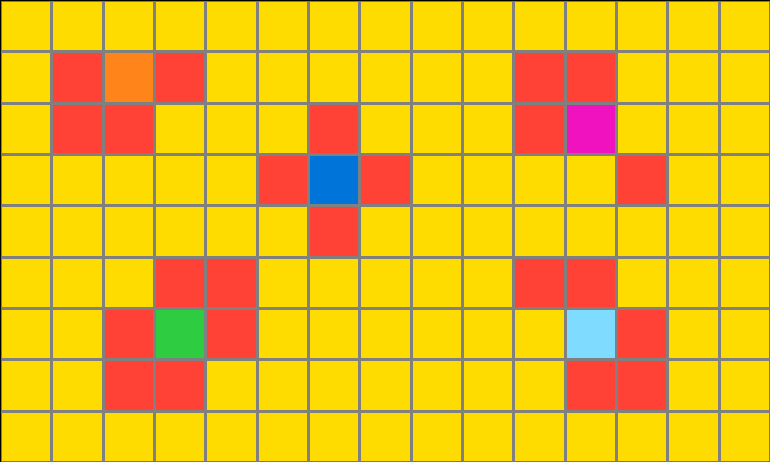
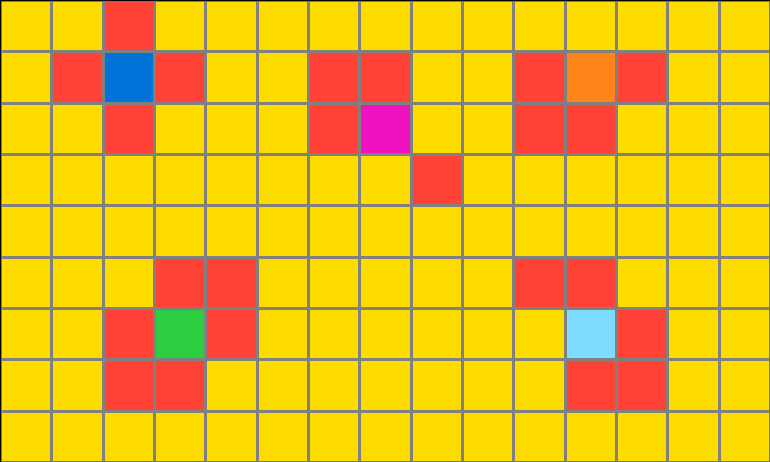
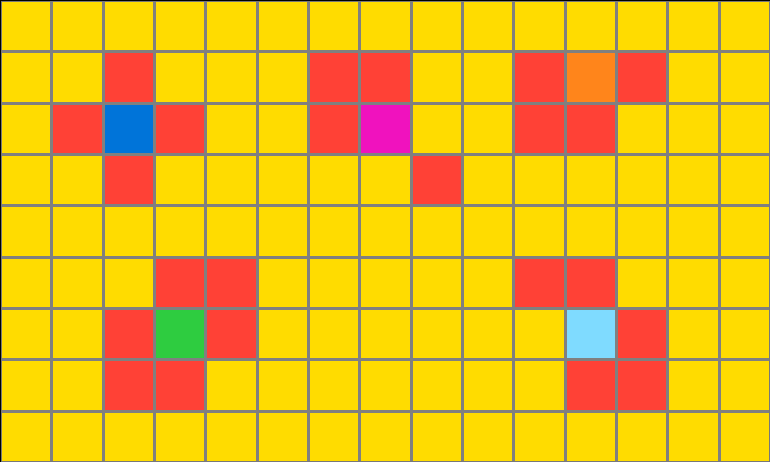
Participant 3
Initial description: Create a solid grid of the color grid shown in the test input then create the colored boxes into the shapes that are outside of the grid.
Final description: Create a solid grid of the color grid shown in the test input then create the colored boxes into the shapes that are outside of the grid.

Participant 4
Initial description: Make the patterns from the grid fit on the smaller design.
Final description: Make the patterns from the grid fit on the smaller design.
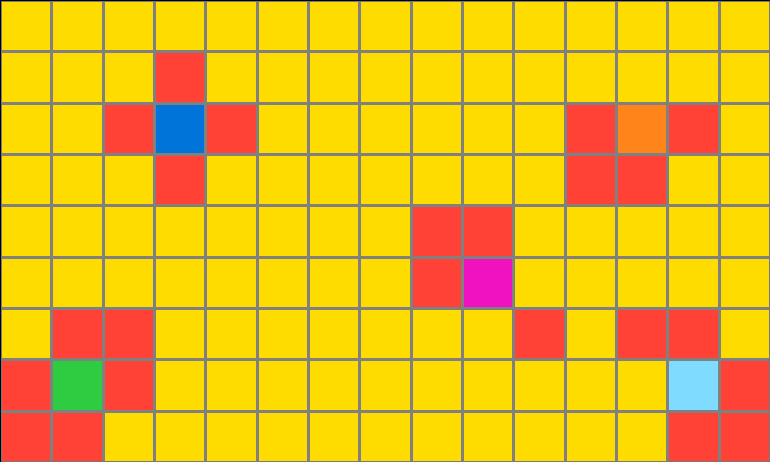
Participant 5
Initial description: Zoom in on the colored section, and move the red blocks to the sides of each corresponding colored box inside of the colored section.
Final description: Zoom in on the colored section, and move the red blocks to the sides of each corresponding colored box inside of the colored section.
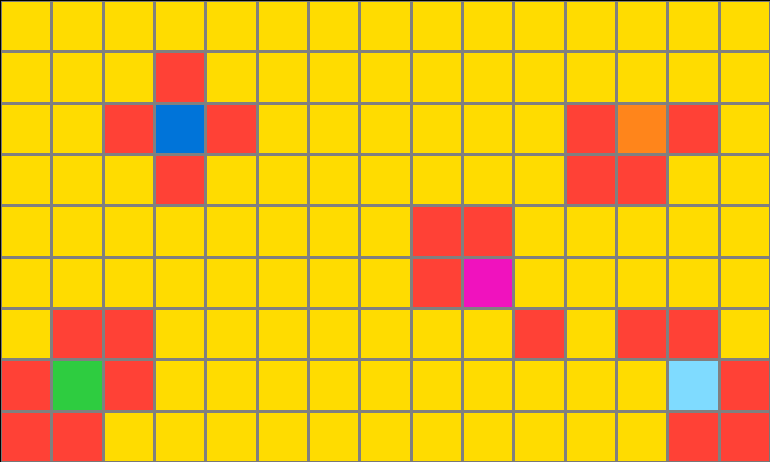
Participant 6
Initial description: The dimensions of the test output are governed by the inner rectangle's dimensions in the test input. So because the yellow rectangle is 9x15 in the test input, the test output's dimensions is also 9x15. The test output's background color is inherited from the inner rectangle in the test input, which is why it's yellow. The individual color cubes inside the inner rectangle in the test input determine which of the smaller cube clusters are included in the test output's yellow rectangle. So because there's a single blue, magenta, light blue, and orange cube in the yellow rectangle in the test output, each color is added in the output. The corresponding designs in the black rectangle get added in the yellow one, depending on which colors are added in the output. The placement of the designs is determined by where the individual cube colors are placed inside the yellow grid.
Final description: The dimensions of the test output are governed by the inner rectangle's dimensions in the test input. So because the yellow rectangle is 9x15 in the test input, the test output's dimensions is also 9x15. The test output's background color is inherited from the inner rectangle in the test input, which is why it's yellow. The individual color cubes inside the inner rectangle in the test input determine which of the smaller cube clusters are included in the test output's yellow rectangle. So because there's a single blue, magenta, light blue, and orange cube in the yellow rectangle in the test output, each color is added in the output. The corresponding designs in the black rectangle get added in the yellow one, depending on which colors are added in the output. The placement of the designs is determined by where the individual cube colors are placed inside the yellow grid.
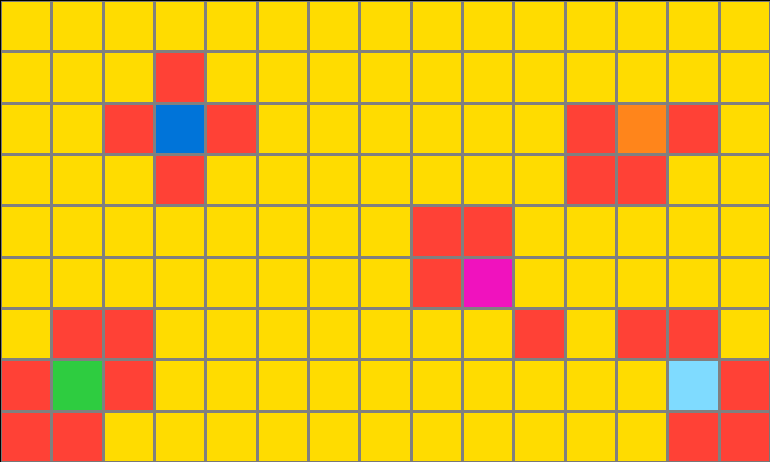
Participant 7
Initial description: Reset grid size to the size of large color block 15 x 9 and fill it yellow. Place corresponding color dots that are on the yellow block onto the grid according to the input then put the correct corresponding designs around each individual dot per the input pattern.
Final description: Reset grid to size of large color block on pattern and insert different color dots in corresponding spaces of pattern. Fill block with yellow then create patterns around different dots according to the corresponding designs from test input example.
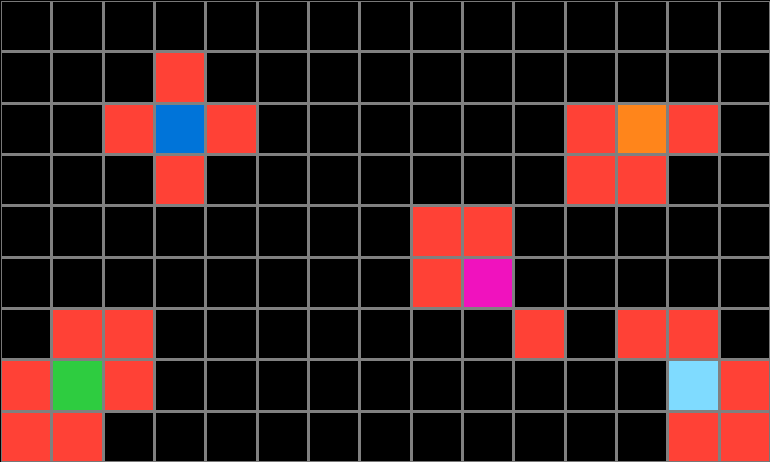
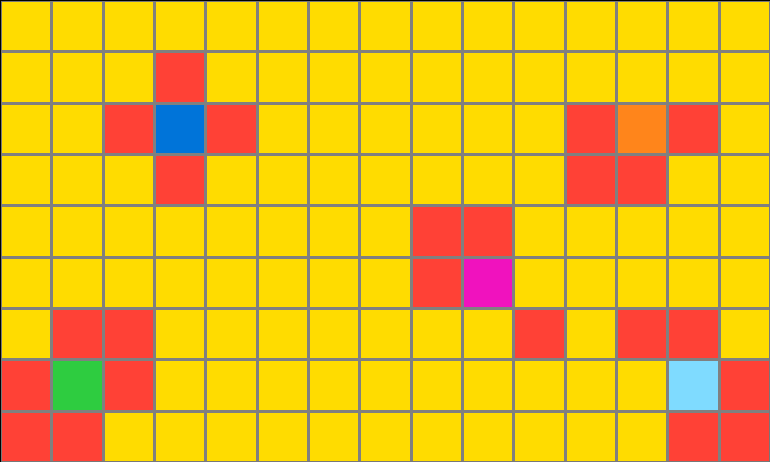
Participant 8
Initial description: Create a pattern that places each central color into its correct space in the smaller grid, then surround that color with the red patterns that correspond with it in the larger, black space surrounding it
Final description: Create a pattern that places each central color into its correct space in the smaller grid, then surround that color with the red patterns that correspond with it in the larger, black space surrounding it

Participant 9
Initial description: Copy the red grid patterns in the black space with certain colored squares in the center to the corresponding colored squares in the larger colored block
Final description: Copy the red grid patterns in the black space with certain colored squares in the center to the corresponding colored squares in the larger colored block
